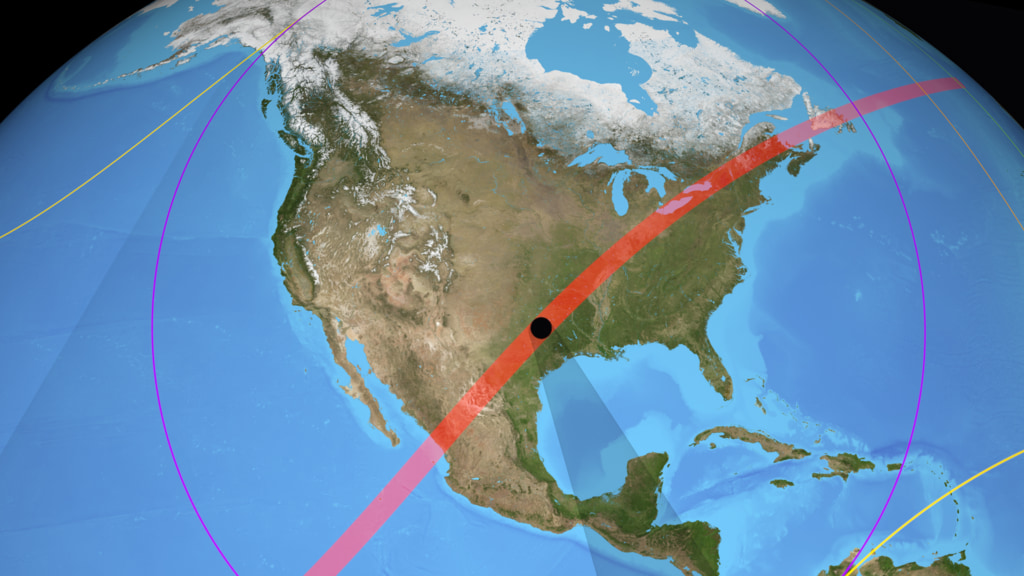Dynamic Eclipse Broadcast (DEB) Initiative
In visible wavelengths of light, the Sun’s surface is much brighter than its corona. During a total solar eclipse, however, observers can see the corona – and scientists can investigate how solar material moves out from the Sun to form the solar wind, an ever-flowing particle stream that impacts Earth and our entire solar system.
The Dynamic Eclipse Broadcast (DEB) Initiative, led by Bob Baer and Matt Penn of Southern Illinois University in Carbondale, organizes volunteers as they capture images of the corona during the 2024 eclipse. Using identical instruments at more than 70 different locations across North America, participants document the moment-by-moment appearance of the corona throughout the eclipse. Comparing these images across locations, scientists track plumes of solar material in the difficult-to-study inner corona, estimating their speed and rate of acceleration and linking these observations to those from NASA spacecraft.
The project expands on the team’s efforts during the 2017 total solar eclipse, this time including observation sites outside the path of totality, where part of the solar disk will remain visible. Images from these locations will reveal the source of solar material later observed as outflows in the corona, allowing the team to trace them back to their origins on the Sun.
DEB Initiative is one of many participatory science projects happening during the 2024 total solar eclipse. Click here to learn more.
Music Credit: “Everything Will Be Fine” Paul Reeves [PRS] via Universal Production Music
Complete transcript available.
B-roll Package
A student team of volunteer scientists ranging from middle to high school, led by team leader Kevin Cobble in Princeton, TX., make preparations for their involvement in the DEB Initiative project ahead of the total solar eclipse on April 8, 2024.
Credits
Please give credit for this item to:
NASA's Goddard Space Flight Center
-
Producer
- Beth Anthony (KBR Wyle Services, LLC)
-
Videographers
- Beth Anthony (KBR Wyle Services, LLC)
- Lacey Young (KBR Wyle Services, LLC)
- Joy Ng (KBR Wyle Services, LLC)
Release date
This page was originally published on Tuesday, March 12, 2024.
This page was last updated on Thursday, April 25, 2024 at 1:41 PM EDT.
![Music Credit: “Gathering Courage” by Sam Connelly [PRS] via Universal Production MusicWatch this video on the NASA Goddard YouTube channel.](/vis/a010000/a014700/a014730/14730_thumbnail.png)
![Music credit: "The Intelligent Plant" by Laurent Dury [SACEM] from Universal Production MusicComplete transcript available.](/vis/a010000/a014500/a014547/14547_Citizen_CATE_Thumbnail.jpg)
![Watch this video on the NASA Goddard YouTube channel.Complete transcript available.Music credit: "Back From The Brink" by Daniel Gunnar Louis Trachtenberg [PRS], “Hive Mind” by Ben De Vries [PRS] and Cam Tigre [PRS] from Universal Production MusicAdditional footage: NASA EDGESound effects: Pixabay](/vis/a010000/a014500/a014532/Thumbnail.jpg)

![Music credit: “Make a Change” by Eric Chevalier [SACEM] from Universal Production Music.Complete transcript available.](/vis/a010000/a013200/a013288/HamSCI_Thumbnail.jpg)
![Watch this video on the NASA Goddard YouTube channel.Complete transcript available.Music credit: "Creativity" by Max van Thun [GEMA] from Universal Production Music.](/vis/a010000/a014400/a014427/Thumbnail_01.jpg)
![Watch this video on the NASA Goddard YouTube channel.Complete transcript available.Music credit: "Synthesis" by Andy Blythe [PRS] and Marten Joustra [PRS] from Universal Production Music.](/vis/a010000/a014400/a014430/Thumbnail_01.jpg)